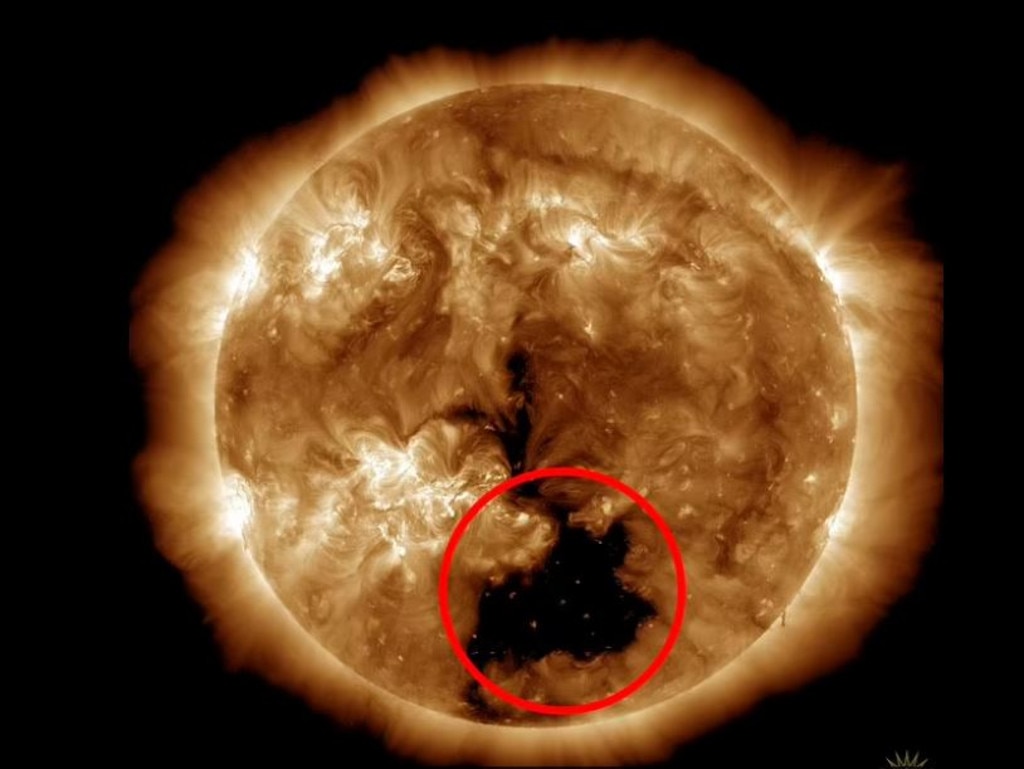An enormous dark hole has opened up in the sun’s surface and is spewing powerful streams of unusually fast radiation, known as solar wind, right at Earth. The size and orientation of the temporary gap, which is wider than 60 Earths, is unprecedented at this stage of the solar cycle, scientists say.

The giant dark patch on the sun, known as a coronal hole, took shape near the sun’s equator on Dec. 2 and reached its maximum width of around 497,000 miles (800,000 kilometers) within 24 hours, Spaceweather.com reported. Since Dec. 4, the solar void has been pointing directly at Earth.

A colossal coronal hole in the sun’s electromagnetic field is set to supercharge Earth’s auroras on March 24, according to the US National Oceanic and Atmospheric Administration. Authorities are being extra vigilant as the sun is in the active phase of its 11-year solar cycle which is expected to peak in 2025.

The coronal hole is unleashing solar winds of 2.9 million km/h towards the Earth, which will hit our planet on Friday.
Scientists are carefully monitoring the situation to assess if the winds will impact our planet’s magnetic field and satellites – with the potential for knock-on effects on the internet, mobile phone networks and GPS.

The Sun has developed a massive “coronal hole,” 20 times larger than Earth, marking the second such occurrence in a week. Picture: NASA
Coronal holes are usually harmless, experts say, and are usually found near the sun’s poles.
They are cooler, less dense areas of the star and appear during the less active stage of the sun’s 11-year cycle.
“Coronal holes are magnetically open areas that are one source of high-speed solar wind,” NASA says.
“They appear dark when viewed in many wavelengths of extreme ultraviolet light, such as seen here. At times, the solar wind can generate aurora at higher latitudes on Earth.”

NASA’s Solar Dynamics Observatory captured both the holes, with the first appearing on March 23.
That coronal hole produced auroras far further south than usual, with the skies over Arizona turning an electric purple and green.
Coronal holes are ranked from G1 to G5, with G1 being the least powerful. The first hole was ranked as a G3.

The second hole is not expected to produce as strong a solar storm as the first, so it’s unlikely that as many auroras will appear.
However, it is more noteworthy to scientists as it has appeared near the sun’s equator.
Daniel Verscharen an associate professor of space and climate physics at University College London, said the location of the hole was “very interesting”.

“The shape of this coronal hole is not particularly special. However, its location makes it very interesting,” he told Business Insider.
“I would expect some fast wind from that coronal hole to come to Earth around Friday night into Saturday morning of this week.”